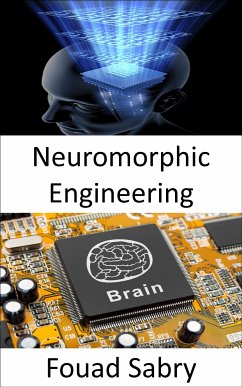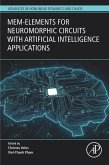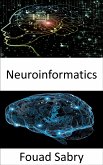What Is Neuromorphic Engineering
Neuromorphic computing and neuromorphic engineering are both terms that refer to the same thing: the use of very-large-scale integration (VLSI) systems that incorporate electrical analog circuits to simulate neuro-biological structures that are found in the nervous system. Any electronic device that does calculations with the help of artificial neurons that are implemented as physical structures is referred to as a neuromorphic computer or chip. Recently, the word "neuromorphic" has been used to refer to analog, digital, mixed-mode analog/digital VLSI, and software systems that embody models of brain systems. This use of the term has become more common. To actualize the implementation of neuromorphic computing on the hardware level, oxide-based memristors, spintronic memory, threshold switches, and transistors are some of the components that may be used. Training software-based neuromorphic systems of spiking neural networks can be accomplished through the use of error backpropagation, for instance through the utilization of Python-based frameworks like snnTorch, or through the utilization of canonical learning rules from the biological learning literature, for instance through the utilization of BindsNet.
How You Will Benefit
(I) Insights, and validations about the following topics:
Chapter 1: Neuromorphic engineering
Chapter 2: Artificial neuron
Chapter 3: Bio-inspired computing
Chapter 4: Steve Furber
Chapter 5: Carver Mead
Chapter 6: Recurrent neural network
Chapter 7: Neural network
Chapter 8: Wetware computer
Chapter 9: Computational neurogenetic modeling
Chapter 10: Spiking neural network
Chapter 11: Neurorobotics
Chapter 12: Misha Mahowald
Chapter 13: Memristor
Chapter 14: Physical neural network
Chapter 15: NOMFET
Chapter 16: Massimiliano Versace
Chapter 17: Kwabena Boahen
Chapter 18: SpiNNaker
Chapter 19: Cognitive computer
Chapter 20: Glossary of artificial intelligence
Chapter 21: Hai Li
(II) Answering the public top questions about neuromorphic engineering.
(III) Real world examples for the usage of neuromorphic engineering in many fields.
(IV) 17 appendices to explain, briefly, 266 emerging technologies in each industry to have 360-degree full understanding of neuromorphic engineering' technologies.
Who This Book Is For
Professionals, undergraduate and graduate students, enthusiasts, hobbyists, and those who want to go beyond basic knowledge or information for any kind of neuromorphic engineering.
Neuromorphic computing and neuromorphic engineering are both terms that refer to the same thing: the use of very-large-scale integration (VLSI) systems that incorporate electrical analog circuits to simulate neuro-biological structures that are found in the nervous system. Any electronic device that does calculations with the help of artificial neurons that are implemented as physical structures is referred to as a neuromorphic computer or chip. Recently, the word "neuromorphic" has been used to refer to analog, digital, mixed-mode analog/digital VLSI, and software systems that embody models of brain systems. This use of the term has become more common. To actualize the implementation of neuromorphic computing on the hardware level, oxide-based memristors, spintronic memory, threshold switches, and transistors are some of the components that may be used. Training software-based neuromorphic systems of spiking neural networks can be accomplished through the use of error backpropagation, for instance through the utilization of Python-based frameworks like snnTorch, or through the utilization of canonical learning rules from the biological learning literature, for instance through the utilization of BindsNet.
How You Will Benefit
(I) Insights, and validations about the following topics:
Chapter 1: Neuromorphic engineering
Chapter 2: Artificial neuron
Chapter 3: Bio-inspired computing
Chapter 4: Steve Furber
Chapter 5: Carver Mead
Chapter 6: Recurrent neural network
Chapter 7: Neural network
Chapter 8: Wetware computer
Chapter 9: Computational neurogenetic modeling
Chapter 10: Spiking neural network
Chapter 11: Neurorobotics
Chapter 12: Misha Mahowald
Chapter 13: Memristor
Chapter 14: Physical neural network
Chapter 15: NOMFET
Chapter 16: Massimiliano Versace
Chapter 17: Kwabena Boahen
Chapter 18: SpiNNaker
Chapter 19: Cognitive computer
Chapter 20: Glossary of artificial intelligence
Chapter 21: Hai Li
(II) Answering the public top questions about neuromorphic engineering.
(III) Real world examples for the usage of neuromorphic engineering in many fields.
(IV) 17 appendices to explain, briefly, 266 emerging technologies in each industry to have 360-degree full understanding of neuromorphic engineering' technologies.
Who This Book Is For
Professionals, undergraduate and graduate students, enthusiasts, hobbyists, and those who want to go beyond basic knowledge or information for any kind of neuromorphic engineering.
Dieser Download kann aus rechtlichen Gründen nur mit Rechnungsadresse in A, B, BG, CY, CZ, D, DK, EW, E, FIN, F, GR, H, IRL, I, LT, L, LR, M, NL, PL, P, R, S, SLO, SK ausgeliefert werden.









